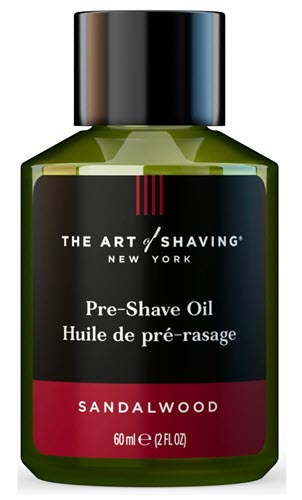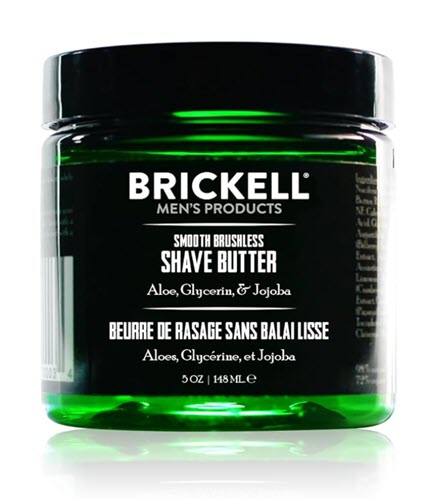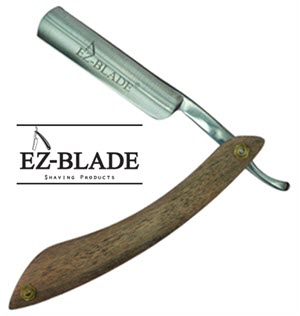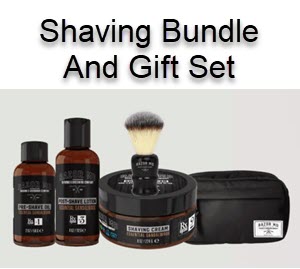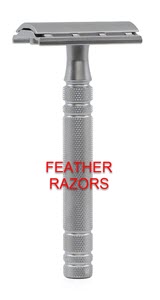Pre Shave Oil: Reduce Nicks & Razor Burn
The Essential Guide to Pre Shave Oil: Enhancing Your Shaving Experience
Shaving, a routine task for many, can sometimes be fraught with challenges such as irritation, nicks, and razor burn. However, integrating pre-shave oil into your grooming ritual can transform this mundane task into a luxurious, skin-friendly experience. Pre shave oil, a product designed to be applied before shaving cream or soap, serves multiple benefits aimed at improving the quality of your shave and the health of your skin.
What is Pre Shave Oil?
Pre shave oil is a blend of natural oils and ingredients formulated to prepare your skin and beard for a close, smooth shave. It’s designed to moisturize the skin, soften facial hair, and create a protective barrier over the skin. This barrier aids the razor in gliding more smoothly, reducing the risk of cuts, nicks, and irritation.
Critical Benefits of Pre Shave Oil
- Skin Protection: One of the primary benefits of pre shave oil is its ability to protect the skin. The oil forms a thin layer that shields your skin from the direct contact of the blade, minimizing the risk of cuts and nicks.
- Moisturization: Pre shave oils are rich in ingredients that nourish and hydrate the skin. Regular use can prevent the dryness and flakiness often associated with shaving, leaving your skin soft and supple.
- Improved Shave Quality: The slick surface created by pre shave oil allows for a closer shave with less effort. It helps lift the facial hair and ensures the razor cuts closer to the skin without irritating it.
- Reduction of Razor Burn and Ingrown Hairs: By enhancing razor glide and reducing friction, pre shave oil helps minimize occurrences of razor burn and ingrown hairs. These common issues can mar an otherwise perfect shave.
- Suitable for All Skin Types: Whether your skin is dry, oily, sensitive, or prone to acne, there’s a pre shave oil designed to cater to your specific needs. Many oils are formulated with natural ingredients that are gentle on the skin.
Choosing the Right Pre Shave Oil
How to Use Pre Shave Oil
Incorporating pre shave oil into your shaving routine is straightforward. Begin by washing your face with warm water to open the pores and soften the hair. Apply a few drops of pre-shave oil to your palms, rub them together, and then massage the oil on the area to be shaved. Allow it to sit briefly before applying your regular shaving cream or soap. Proceed with shaving as usual, enjoying the enhanced experience pre-shave oil provides.
Pre shave oil is a game-changer in men’s grooming, offering many benefits that can elevate your shaving routine from a chore to a pampering experience. Its protective, moisturizing, and skin-soothing properties ensure that your shave is closer and gentler on your skin. By choosing the right oil for your skin type and incorporating it into your daily routine, you can say goodbye to shaving irritations and welcome a smoother, more enjoyable shave.
Embracing Nature: The Benefits of Natural and Organic Shaving Products
The shift towards natural and organic options in personal care routines has become more prominent in a world where the quest for health and sustainability is ever-growing. This is especially true in shaving, where our products directly impact the skin, the body’s largest organ. Natural, organic, or DIY alternatives for pre-shave oils, shaving creams, and aftershave products offer a gentler, more environmentally friendly approach to grooming. Here, we explore the myriad benefits of these natural options, focusing on their skin-friendly ingredients and positive environmental impact.
Gentle on the Skin
- Non-toxic Ingredients: Natural and organic shaving products are formulated without synthetic chemicals, preservatives, fragrances, or colorants, often found in conventional products. These chemicals can cause irritation, allergic reactions, or long-term health issues. Instead, natural products use ingredients derived from plants.
- Rich in Nutrients: Natural shaving products often contain vitamins, minerals, and antioxidants that nourish the skin. For example, aloe vera can soothe and hydrate, while jojoba oil mimics the skin’s natural oils, offering deep moisturization without clogging pores.
- Suitable for Sensitive Skin: With fewer irritants, natural and organic options are ideal for those with sensitive skin. They help maintain the skin’s natural balance, reducing the risk of irritation, redness, and razor burn commonly experienced with harsher chemicals.
Environmentally Friendly
- Biodegradable Ingredients: Natural products are made with ingredients that break down more quickly in the environment, reducing pollution and harm to aquatic life. It contrasts with many synthetic components that can linger and accumulate, causing ecological damage.
- Sustainable Sourcing: Organic products emphasize sustainable farming practices, which minimize pesticide use, conserve water, and support soil health. By choosing organic, consumers contribute to a healthier farming approach for the planet.
- Reduced Packaging Waste: Many natural and organic brands prioritize ec friendly packaging, using recyclable or biodegradable materials. This approach aligns with a broader environmental ethic, aiming to reduce plastic waste and its impact on landfills and oceans.
DIY: A Personal Touch
Engaging in DIY projects to create your pre shave oils, shaving creams, and aftershave products allows for customization based on skin type and scent preferences and offers transparency. You should know what’s going into your products, eliminating the guesswork associated with hidden or obscure ingredients. Furthermore, DIY options can be cost-effective and rewarding, offering a deeper connection to your grooming routine.
The benefits of natural and organic shaving products extend beyond just a superior grooming experience. They offer a kinder approach to your skin, imbued with nature’s healing and nourishing properties. Additionally, they reflect a commitment to environmental stewardship, aligning personal care with sustainability and ecological responsibility values. As more individuals recognize these benefits, the shift towards natural and organic options grows, fostering a healthier, more sustainable world, one shave at a time.
The Foundation of Radiant Skin: The Benefits of a Comprehensive Skincare Routine
Establishing a consistent skincare routine is paramount in seeking healthy, vibrant skin. Beyond shaving, a well-rounded skincare regimen is essential for everyone, regardless of age or gender. This routine typically encompasses cleansing, exfoliating, moisturizing, and protecting the skin from environmental damage. Each step is critical in maintaining skin health, preventing common issues, and ensuring your skin looks and feels its best. Here’s how a dedicated skincare routine can significantly affect your skin’s appearance and health.
Cleansing: The Cornerstone of Skincare
- Removes Impurities: Daily cleansing washes away accumulated dirt, oil, and unwanted debris. It prevents clogged pores, the leading cause of acne and irritation.
- Prepares the Skin: Cleansing prepares the skin to absorb other products more effectively, ensuring that treatments, moisturizers, and serums penetrate deeply and work more efficiently.
Exfoliating: Unveiling Fresh Skin
- Promotes Cell Renewal: Regular exfoliation removes dead skin cells from the surface, promoting new cell growth. This process brightens the complexion, evens skin tone, and reduces the appearance of fine lines and wrinkles.
- Prevents Acne: Exfoliation can significantly reduce breakouts and blackheads by removing dead skin and excess oil from the pores.
Moisturizing: Hydration and Balance
- Enhances Skin Barrier: Moisturizing strengthens the skin’s barrier function, protecting against irritants and preventing dryness or oiliness by balancing the skin’s natural moisture levels.
- Delays Aging Signs: Well-hydrated skin appears more plump, elastic, and youthful. Regular moisturizing can delay the signs of aging by keeping the skin nourished and preventing the development of fine lines and wrinkles.
Protection: Shielding from Environmental Damage
- Guards Against UV Damage: Sun protection is crucial in skincare. Daily use of SPF prevents premature aging, reduces the risk of skin cancer, and protects against harmful UV rays that can lead to sunspots and other forms of hyperpigmentation.
- Combats Pollution: Antioxidant-rich products can help shield the skin from pollution and free radicals, which are known to accelerate skin aging and contribute to dullness and discoloration.
A comprehensive skincare routine is more than just a means to look good; it’s an investment in your skin’s long-term health and resilience. By dedicating daily time to cleansing, exfoliating, moisturizing, and protecting your skin, you’re combating immediate concerns like acne or dryness and preventing future issues. Moreover, the skincare ritual offers a moment of self-care in our busy lives, allowing us to relax, reflect, and nurture ourselves. Whether you want to maintain your skin’s youthful glow, address specific issues, or ensure its overall health, a well-curated skincare routine is essential to achieving clear, healthy skin.
Mastering the Art of Shaving: Techniques for a Smooth, Irritation-Free Experience
Understanding Shaving Directions
- With the Grain (WTG): Shaving “with the grain” means moving the razor in the same direction as hair growth. This method is gentler on the skin and significantly reduces the risk of irritation and razor burn.
- Against the Grain (ATG): Shaving “against the grain” involves moving the razor opposite to hair growth. While this technique can achieve a closer shave, it’s more likely to irritate the skin, cause razor bumps, and result in ingrown hairs, especially if not done carefully.
- Across the Grain (XTG): An intermediate method involves shaving “across the grain” or perpendicular to hair growth. This technique balances a close shave and minimizes skin irritation, making it suitable for those looking to refine their shave without discomfort.
Benefits of Proper Shaving Techniques
- Reduced Skin Irritation: You can drastically decrease skin irritation by choosing the right direction to shave. Shaving WTG is the most gentle approach, minimizing the chances of razor burn and post-shave redness.
- Prevention of Ingrown Hairs: Proper shaving techniques, especially shaving WTG or XTG, help prevent ingrown hairs by cutting the hair cleanly without causing it to retract below the skin surface or grow back into the skin.
- Achieving a Smoother Shave: Although shaving ATG can provide the closest shave, combining all three methods (starting with WTG, then XTG, and finishing with a careful ATG pass) allows for a smooth finish with minimized risk. This stepwise approach ensures the hair is gradually reduced, making a final ATG pass less irritating.
- Enhanced Razor Longevity: Shaving in the correct direction benefits your skin and razor. By reducing unnecessary friction and resistance, blades remain sharper for longer, saving you money and reducing waste over time.
Tips for an Effective Shave
- Prepare Your Skin: Always start with a clean, moist face. Warm water or a hot towel can help open pores and soften hair, making cutting easier.
- Use Quality Products: Use a good shaving cream or gel and a sharp, reliable razor. Quality products can enhance glide, protect skin, and improve the shaving experience.
- Aftercare: Rinse your face with cool water to close the pores following your shave. Apply a soothing aftershave balm or moisturizer to hydrate the skin and reduce potential irritation.
Shaving is not just a routine but an art that, when perfected, can transform your grooming experience. By understanding and applying effective shaving techniques, including the strategic direction of your shave, you can achieve a closer, smoother shave while minimizing irritation and discomfort. With proper skin preparation, quality products, and careful aftercare, these methods ensure that each shave contributes to the health and appearance of your skin, making each stroke not just a cut but a step towards a more refined grooming ritual.
Nurturing Delicate Skin: The Benefits of Sensitive Skin Solutions
Sensitive skin requires special attention, especially regarding shaving and skincare routines. Individuals with this skin type often face challenges like irritation, redness, and discomfort, which specific products and practices can exacerbate. Fortunately, hypoallergenic shaving and skincare solutions designed specifically for sensitive skin can help manage these issues effectively. This article explores the benefits of sensitive skin solutions, offering insights into hypoallergenic products and practical tips for avoiding common irritants.
Hypoallergenic Products: Gentle Care for Sensitive Skin
- Reduced Risk of Irritation: Hypoallergenic products are formulated to minimize the risk of allergic reactions and skin irritation. By excluding common irritants such as fragrances, alcohol, and harsh chemicals, these products offer a safer option for those with sensitive skin.
- Soothing Ingredients: Many sensitive skin products contain soothing and anti-inflammatory properties, such as aloe vera, chamomile, and oatmeal. These components help calm the skin, reduce redness, and relieve discomfort.
- Enhanced Skin Barrier: Hypoallergenic skincare products often include ingredients that support the skin’s natural barrier function, protecting against environmental stressors and preventing moisture loss. It is crucial for sensitive skin, which can be more prone to damage and dehydration.
Tips for Managing Sensitive Skin
- Patch Test New Products: Test a small skin area. It helps identify potential reactions and ensures the product is safe for broader use.
- Choose Products Wisely: Look for products labeled “hypoallergenic,” “for sensitive skin,” or “fragrance-free.” Be cautious of products containing alcohol, artificial fragrances, and aggressive exfoliants, as these can be harsh on sensitive skin.Simplify Your
- Routine: A minimalist approach can benefit sensitive skin. Using fewer products reduces the risk of irritation and makes it easier to identify which products work best for you.
- Be Gentle: Use gentle motions when applying products and avoid rubbing or pulling the skin. Opt for soft, non-abrasive materials like cotton cloths or pads for application and removal.
- Moisturize Regularly: Keeping your skin hydrated is vital to managing sensitivity. Look for moisturizers with hyaluronic acid, ceramides, or glycerin.
- Protect Your Skin from the Sun: UV exposure can aggravate sensitive skin. Use a broad-spectrum sunscreen designed for sensitive skin daily, even on cloudy days, to protect against sun damage.
Sensitive skin requires thoughtful care and attention, but hypoallergenic products and practices make managing sensitivity much more manageable. Individuals with sensitive skin can enjoy a comfortable, irritation free grooming experience by focusing on gentle, soothing ingredients and avoiding common irritants. Remember, every skin is unique, so taking the time to understand your skin’s specific needs and reactions is crucial to developing a skincare routine that nurtures and protects your delicate complexion.
The Ultimate Guide to Choosing Pre Shave Oils: Navigating Recommendations for the Perfect Shave
For many, the quest for a smooth, comfortable shave is an ongoing journey. Pre shave oils have emerged as a pivotal component in achieving this goal, providing protection and enhancing the overall shaving experience. With many options available, sifting through recommendations to find the best pre-shave oils can be daunting. This article delves into the benefits of seeking product recommendations and factors to consider, helping you navigate the landscape of pre-shave oils for an informed choice.
The Power of Recommendations
- Insight into Performance: Recommendations, especially from trusted sources, offer valuable insights into a product’s performance. User reviews, expert opinions, and testimonials provide a real-world glimpse into the efficacy of different pre shave oils, highlighting their ability to soften hair, protect the skin, and reduce irritation.
- Price and Value Considerations: Not all pre shave oils are created equal, and price doesn’t always correlate with quality. Recommendations help identify products that offer the best value for money, balancing cost with performance. It ensures you’re investing in a product that meets your needs and fits your budget.
- Discovering User Experiences: One key benefit of researching recommendations is learning from others’ experiences. Reviews can show how a product interacts with different skin types, its texture, fragrance, and any potential drawbacks, allowing you to make a more informed decision.
- Uncovering Hidden Gems: Recommendations can introduce you to products you might not have considered, including lesser-known brands or formulations. It can benefit those seeking natural, organic, or specialty products tailored to specific skin concerns.
Factors to Consider When Choosing Pre Shave Oils
- Ingredients: Look for oils with natural, nourishing ingredients like jojoba, argan, and almond oils. Avoid products with synthetic fragrances or chemicals, especially if you have sensitive skin.
- Skin Compatibility: Consider your skin type and any issues you face, such as sensitivity, dryness, or acne. Recommendations often highlight products suited for different skin conditions, helping you find an oil that complements your skin.
- Absorption and Texture: The ideal pre shave oil should absorb well without leaving a greasy residue. User reviews can provide insight into a product’s texture and how it feels on the skin.
- Scent: While personal preference plays a significant role in choosing a scented product, reviews can help you gauge the strength and appeal of a pre shave oil’s fragrance, ensuring it’s not overpowering or unpleasant.
- Packaging and Quantity: Practical considerations like the ease of use, packaging design, and the amount of product provided can influence your satisfaction. Recommendations often touch on these aspects, aiding in your decision-making process.
Conclusion
Leveraging recommendations when searching for the best pre-shave oils can significantly enhance your ability to make an informed choice, ensuring you select a product that offers optimal performance, value, and satisfaction. You can confidently navigate the vast array of options by focusing on ingredients, skin compatibility, absorption, scent, and practicality. Remember, the right pre shave oil can transform your shaving routine from a chore into a luxurious, skin-pampering ritual.
- Bakblade 2.0: The Ultimate Solution for Back Hair Removal
- Best Ball Shaver for Sensitive Skin – 2024 Picks
- The Shaving Gel Hack That Beauty Gurus Don’t Want You to Know About!
- Henson Shaving: Where Design Meets Durability and Performance
- Caramel Honey Blonde Hair: Elevate Your Look
- Feather Razors: Precision Shaving for Every Skin Type
- Straight Razor Shaving: Unlocking a Closer, Smoother Shave
- Premium Safety Razors: Your Guide to Quality Shave
- Pros & Cons: Shaving Against the Grain Guide
- Maximize Your Shave: Norelco Sensotouch 3d Razor
- Best Aftershave for Men: Elevate Your Grooming
- Where to Buy A Straight Razor: Expert Stores & Online Tips
- Elevate Your Grooming Game with a Premium Shaving Kit
- Unlock Shine: The Ultimate Hydrating Cleansing Conditioner
- Styptic Pencils: Quick Fix for Minor Bleeds & Nicks
- Panasonic Men’s Shaver: Experience The Future
- Pre Shave Oil: Reduce Nicks & Razor Burn
- Van Der Hagen shaving soap review: A Closer Look
- Scuttle Shaving: Unlocking the Secret to a Perfect Shave
- Ogallala Bay Rum: A Timeless Scent for the Modern Gentleman
- Best Double Edge Razors: A Cut Above the Rest
- Master the Art of Shaving: Your Guide to Buying a Straight Razor
- How To Sharpen Electric Razor Blades: Quick Guide
- The Benefits of Aftershave: It’s Skin Care
- Secure & Stylish: Choosing the Best Travel Razor Case
- Master the Art of Shaving with Adjustable Safety Razors
- The Best Safety Razors You Can Find for a Superior Shave
- Cremo Shaving Cream: For the Ultimate Shave
- Simpson Shaving Brush: Your Best Shave Awaits!
- The Secret to a Perfect Shave? Unveiling the Edwin Jagger Safety Razor
